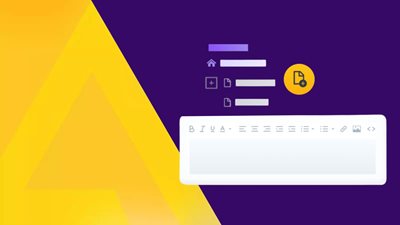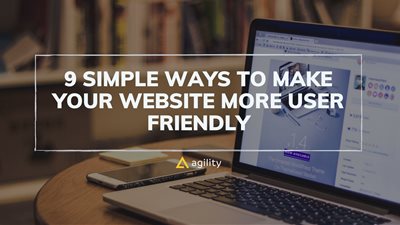How Content First Design Improves User Experience


A compelling website is more than the visual sum of its parts.
It’s easier to focus on vanity elements like the looks of the site. Don’t be fooled by the site’s looks. Your site’s design should make you happy, but there are even more important considerations like the site user experience, which in essence, is more important.
One good way to improve UX is to design with a content-first approach. Content-first design is a user-centric approach that focuses on getting the right content to the right people at the right time by putting the needs of the user first.
There are several benefits of designing with content in mind. But here are some of the most important ways to improve user experience with content.
Content first Design Makes Navigation Easy
One critical aspect of user experience is navigation. Users will get frustrated and try to abandon their visit if the site is challenging to navigate. Content first design hedges you against this by putting content front and center.
A content first design is where design experts lead with the site navigation. A site’s navigation ties everything together and makes it easy for people to quickly discover the information they’re looking for on your site.
This is a small but meaningful step that makes navigation easy for them and in turn creates a better user experience.
Encourages Engagement
Another result of UX focused design is high engagement. There’s no point of a beautiful site or app if there are no users for the same. A difficult-to-use site frustrates users and prevents retention. That’s not to say the site shouldn’t be pleasing. You can use Procreate brushes and download them for free to design images and graphics for your site and encourage action.
Content-first design helps improve encouragement by ensuring users can find what they need when they navigate the site. This helps you engage your users and keep them coming back for more.
Urges Social Sharing
Content-first design also improves user experience by urging social sharing. Good content is also shareable. If users find your content helpful or entertaining they are much more likely to share the same with others.
The more people see your content, the more traffic grows to your site. It improves sales because more stick around and see your offer.
Increases Brand Awareness
Content-first design improves brand awareness by helping you present information on your site more strategically.
If you can control the tone and voice of your site by creating text that reflects your brand’s identity.
Use images and videos to reinforce brand messaging. When done well content-first design makes a cohesive and memorable user experience that leaves users with a positive impression of your brand.
Reduces Cognitive Load
Cognitive load is the effort required to process and understand information. A website with loads of content can overwhelm users and cause them to leave.
Content-first design focuses on reducing cognitive leod by presenting only the most essential information on the site. When starting with content you can easily determine what’s most important and place that front and center to result in a better overall experience.
Ensures Consistency Across Platforms
One significant benefit of content first design is it ensures consistency across platforms. Irrespective of how many users access your site through desktop mobile or tablet, they always see the same content in the same order.
Content first design starts with developing actual content ranging from text, images, to videos before choosing the layout or design. Once you finalize the content, then there’s the task of designing the site around that content.
This approach contrasts with a traditional design which starts with creating a layout or template and then filling it with content.
Improves Usability
One of the chief goals of good UX design is to ensure people find what they need on your site. A content-first approach helps users make the most important decisions they should.
If your home page has three sections like the introduction, a feature list and a call to action button. The traditional approach is to put the introduction at the top of the page followed by a feature list and a CTA at the very bottom.
If going for a content-first approach, you reverse the traditional approach by putting the CTA at the top of the page. Instead of making people scroll down to find it, users will see it right at the start of your homepage. And that alone would lead to better conversions.
Content first design has a few important steps like:
- Ensure that the message should be effective as a standalone message
- The design elements should make the message more effective
When you try to fit content into a design that you already invested thousands of dollars that gives rise to several problems:
- You force yourselves to abandon important parts of the message because the design gives you very little space for it
- You are forced to shorten or change the content in ways that make the message less powerful
- Spend extra time and resources redesigning the entire web page so they complement the content
The content first approach has short-term benefits but in the long term greater ROI as in better user experience.
Why Design Content-first?
Content informs a big part of the user experience. You can use the list of best Excel interview questions to ask people what they expect when they arrive on your site. Then use this information to create a content-first design.
If the primary goal of websites is to deliver valuable content to an audience, you should be designing the site with a content-first approach.
We miss the opportunity to validate UX designs with content insights. Instead, the approach is generally to wait until the last stage to unite both content and design.
And there lies the problem. When you are taking a design content first approach, you are taking content to the center stage and making it the core part of the user experience, whether it’s mobile or desktop. Ensure that you respect and consider the opportunities and implications of content. That’s when good UX design takes the delivery of content and communication of sites’ content to the next level.
Four steps to getting started with content-first design
Using a content-first approach works best when teams have a strategic workflow to make it successful. What does that process include?
1. Define your strategy and process
Never base your content strategy on your organization’s goals but also on user needs. There are several questions and strategies. copywriters and designers need to ask with content-first design.
Put yourselves in your user’s shoes. Ask and find out what they would like to know and you would want them to know. Ask yourself these questions and create content to strike a balance between the three. Only after you determine this can you start thinking about design elements.
2. Define your process
Once you have the answers ready, start drafting your content. The scope of this varies.
- Develop the scope of the project. Put content needs first and then extend the same to design
- Choose your deliverables
- Set deadlines for both creators and designers
- Outline how stakeholders like content creators, designers and others will collaborate during the design process
3. Map and test the message
With the high level of content strategy already in place and housekeeping tasks being taken care of you can start developing your message.
This includes many things like:
- Create a specific purpose for each of your pages, depending on where it falls in the customer and user journey.
- Determine the main message that you want to convey
- Create page outlines and write the initial content based on these details.
Test your messaging. You don’t just do an internal review with stakeholders but put it in front of your entire audience.
4. Finalize the content first and then finalize the design
Once you choose the page layouts and messages for each page, create the final piece of content. The design must also be finalized. But beyond this, let’s get some insights into how you can create the final content.
5. Embrace the power of the content audit
This post isn’t about the merits of content audits. It’s important for UX designers to learn from insights gained from current audits.
They must see which types of content are already present and which the future of your business demands.
Answer all these questions:
- How much content will the new navigation need
- What content has been popular
A good UX designer reflects on these insights and folds that thinking into their work.
Especially true if there’s loads of content.
The client may say there’s a permanent news slot. However, a content audit may show that the news section is mostly irrelevant and that only four articles were published in the past 12 months.
The UX designer comprises with the client to design a homepage template that shows the latest news items only if it's younger than a week.
Otherwise, the template closes automatically giving the site space for other more useful content.
Acting on current insights reduces the odds of jeoparding user experience and removes pressure on site’s owners to produce more news stores.
Final Thoughts
Content-first design is a UX approach that starts with developing the content before moving on to the design. If you’re in the early process of creating a website or thinking about a website redesign, ensure this content-first approach is on your radar. It’s easy to get caught up in the design process and easily overlook how your content will impact the visitor’s experience and conversions.

About the Author
George is a writer and blogger and has been working in the SaaS and online marketing industry for the past 12 years.



